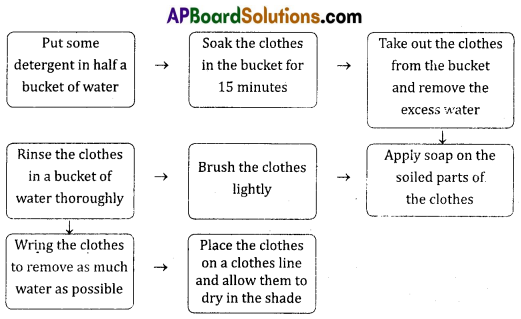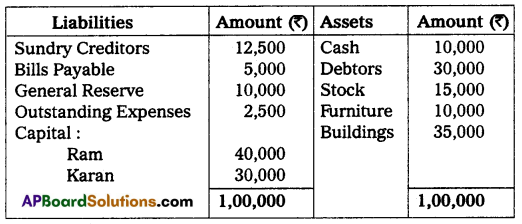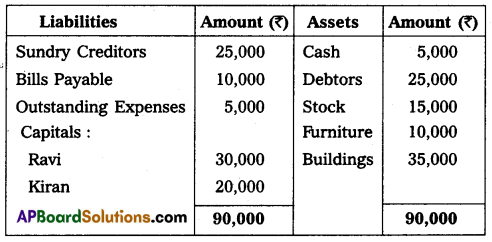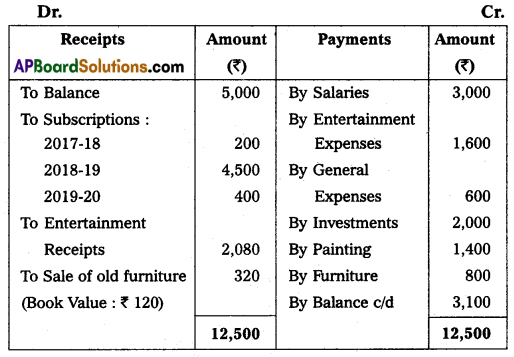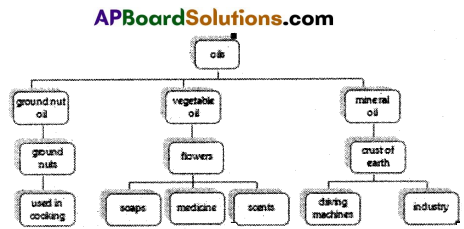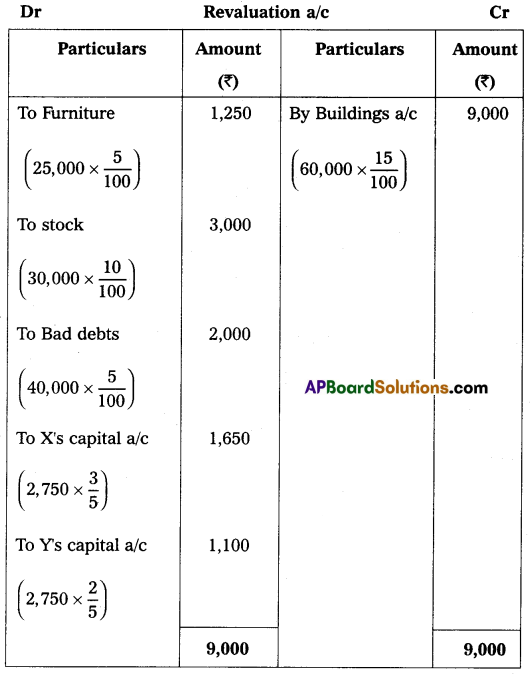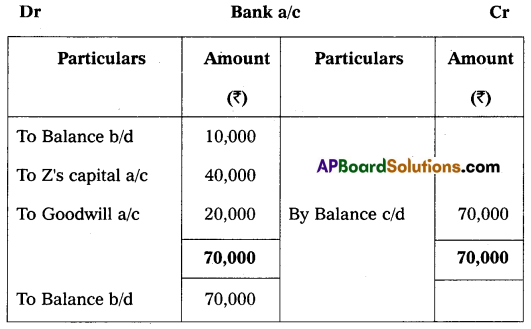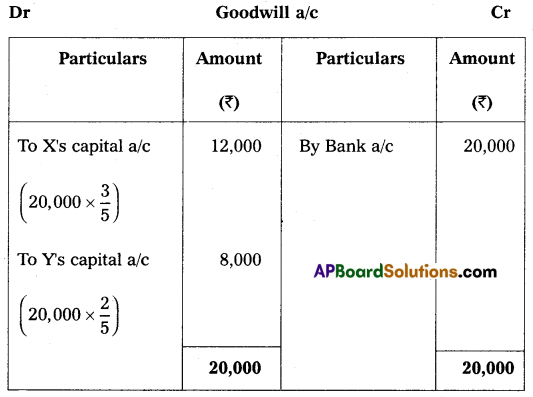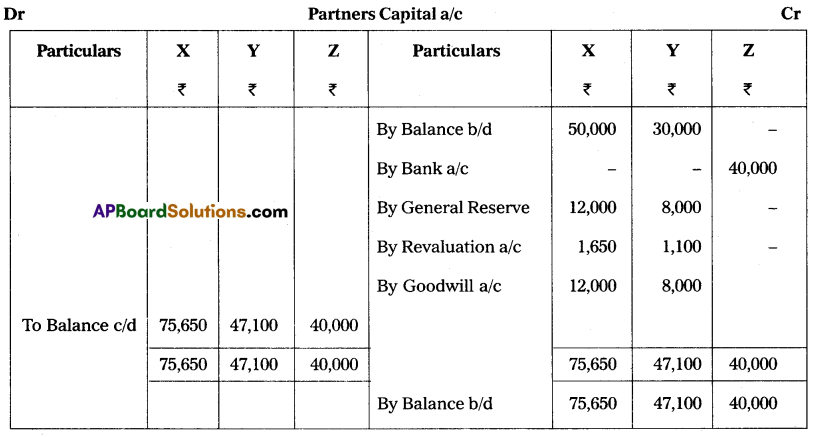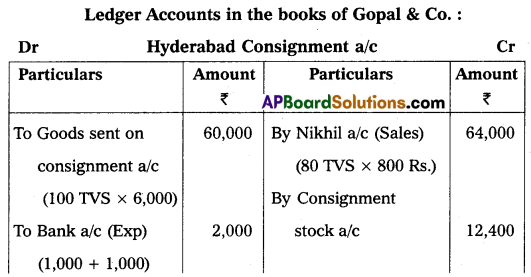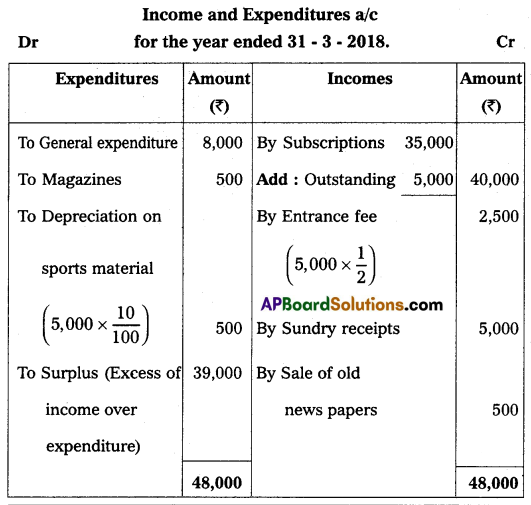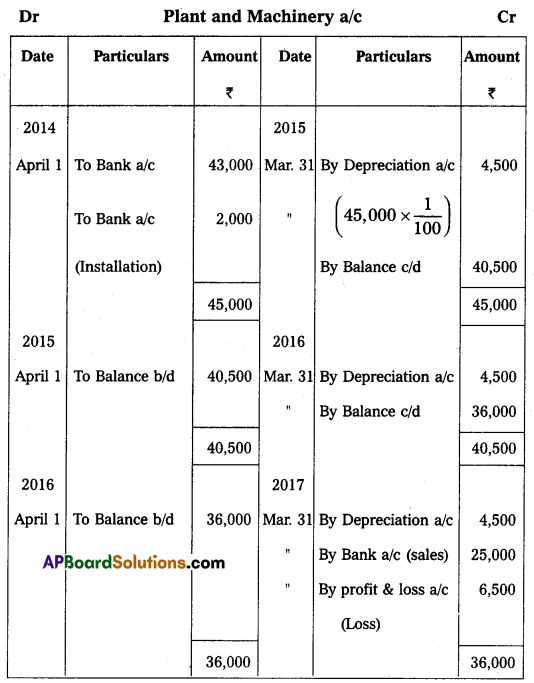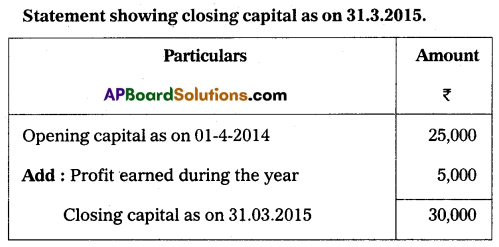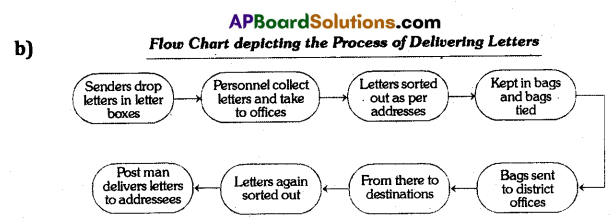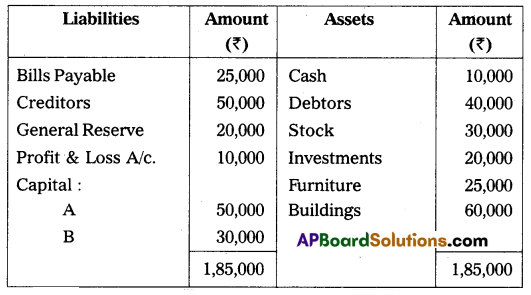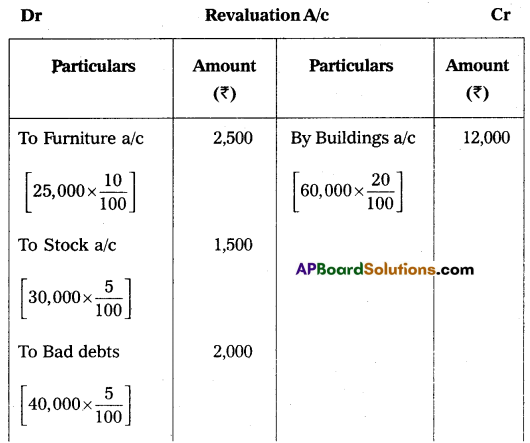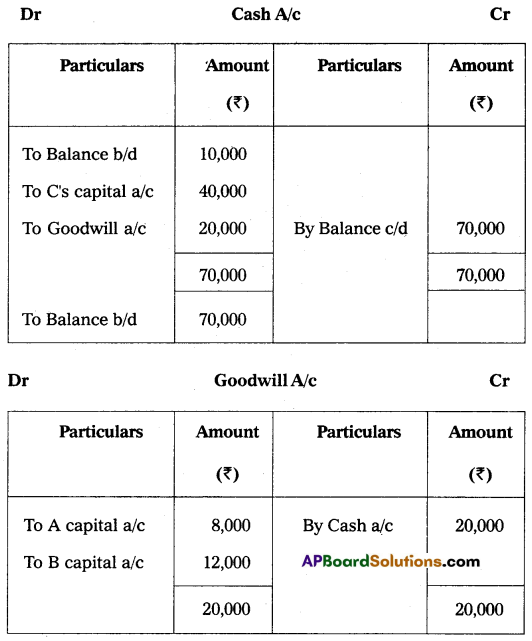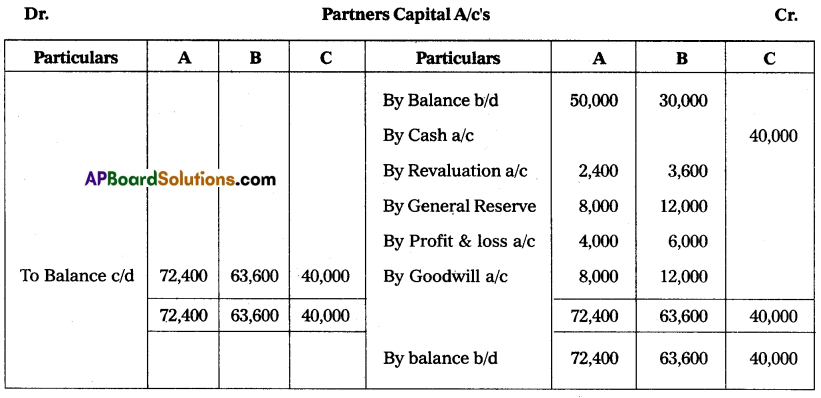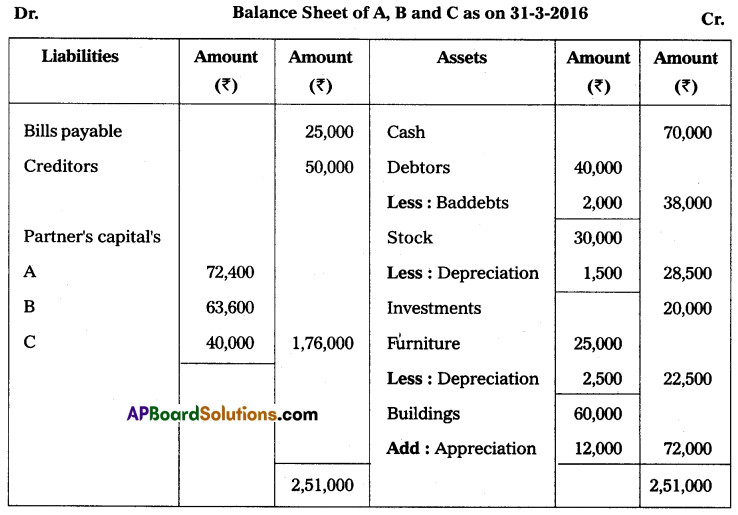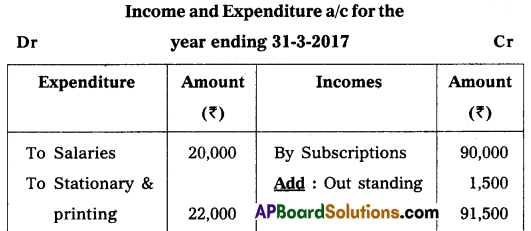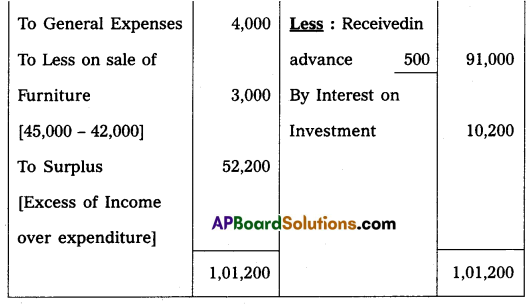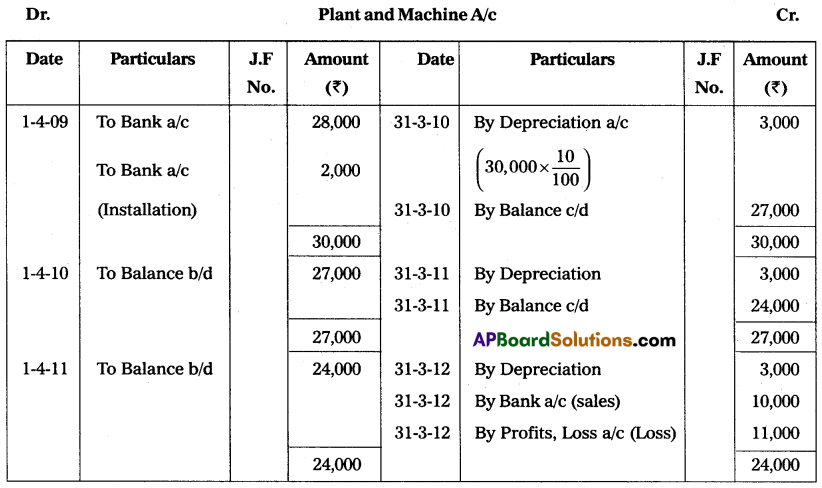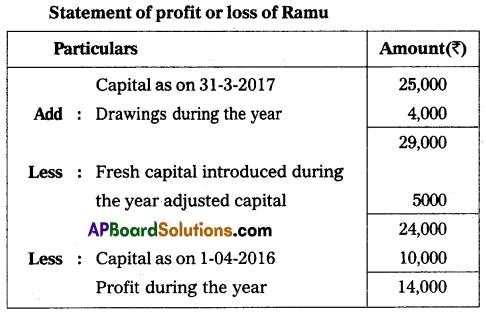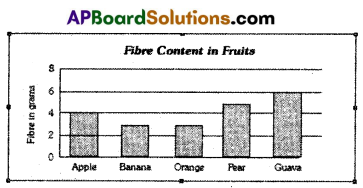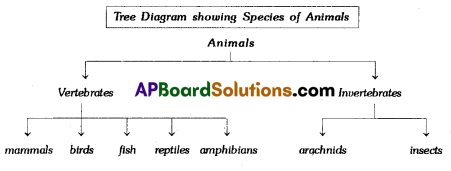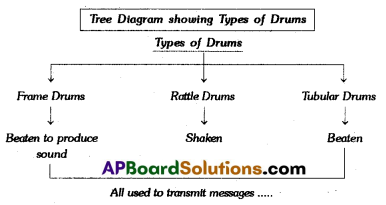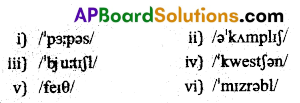Thoroughly analyzing TS Inter 1st Year Political Science Model Papers Set 5 with Solutions helps students identify their strengths and weaknesses.
TS Inter 1st Year Political Science Model Paper Set 5 with Solutions
Time: 3 Hours
Max. Marks: 100
Section-A
3 x 10 = 30 Marks
Note: Answer any THREE of the following questions In not exceeding 40 lines each. Each question cames 10 Marks.
Question 1.
Write about the importance of Political Science.
Answer:
Introduction: Political Science is a premier social science. It is mainly concerned with the study of the state in its relation with Society, Citizens, Associations, and the world at large. Aristotle is regarded as the Father of Political Science. He wrote famous book THE POLITICS”.
Meaning: The word politics is derived from the ancient Greek word “POLIS’ meaning city. State and polity from Poletieia’s meaning government of constitution. Politics came to mean the study of state and government and the Institutions of the state.
Definitions: Political Scientists gave various definitions, on Political Science. They are as follows:
- J.W. GARNER: “Political Science begins and Ends with the State”.
- R.G. GETTLE: “Political Science is” The historical investigation of the state in the past, an analytical study of the state of present and what the state ought to be in the future”.
- ROBERT DAHL: “Political Science is the Scientific study of importance of power, Authority and influence.”
The political science helps to bring out certain changes in the political system and also suggests solutions for the political problems. It also helps to promote good citizenship and formation of responsible government susceptible to public opinion.
1. Political Science explains concepts and theories: Political. Science studies the relations between the individual, society and state. It helps to protect the liberty and freedom of the individuals. Study of Political Science aids to know the political theories, concepts and ethical principles useful for the creation of a progressive society.
2. Political Science examines forms and organs of the government: The study of Political Science enhances the knowledge of the systems of government. It details about monarchy, aristocracy, democracy, dictatorship and other forms of government. It speaks about the organs of the government like legislature, executive and judiciary, their functions and inter-relations.
3. Political Science enlightens on rights and duties:
Rindamental rights are essential for the people to lead a good life in a political society. The observations made in Political Science help to enlighten the citizens about their respective rights and duties all their pros and cons to contribute for a good citizenship.
4. Political Science provides knowledge of the political thinkers: The study of Political Science provides knowledge of the
political thinkers and theories which had influenced the world in different times. There were many political theories, which became popular in different times. The philosophers like Rousseau and Volasire laid the foundations for French Revolution through their works. In the same way, the writings of Karl Marx led to a revolution in Russia and the ideas of Mao led to a revolutionary trend in China. Mahatma Gandhi provided constructive political leadership to Indian freedom struggle. The study of political science educates about political thinkers.
5. Political science deals with International Relations: The significance of the Political Science gradually increased as many Sovereign independent countries joined the world political system.
It speaks about the inevitable cooperation between different countries. The international relations as a network became very important due to the Industrial Revolution, and its effects. Modernisation, technological development and transport facilities led to formation of regional groups between neighboring countries resulting in growing importance of international relations. Study of Political Science enlightens about all these subjects in detail.
6. Political Science explains world organisations: The United Nations Organisation has been putting continuous efforts to promote peace, cooperation and friendship among nations of the world. Its agencies are spread throughout the world undertaking various activities for the dcvelopment of human kind. Political Science acquaints us with all these matters.

Question 2.
What are the differences between State & Society?
Answer:
Differences between State and Society:
| State |
Society |
| 1. State is a political organization. |
1. Society is a social organization. |
| 2. Whereas the state has its own fixed tempory and limits. |
2. Society does not have definite territorial boundaries. |
| 3. The state has a definite government. |
3. Society does not have any legal and prescribed organization. |
| 4. State possesses the power of compulsion. Disobedience to its laws is followed by punishment. |
4. Society does not enjoy the power compulsion. Disobedience to its principles is not followed by any physical punishment. |
| 5. State alone has sovereignty. |
5. Society does not possess It operates through the instruments of compulsion and coercion. It uses force to implement its. laws and policies. |
| 6. State is not a natural organization. It is an artificial institution. Its membership is compulsory for Individuals. |
6. Society is a voluntary and natural organization. Individuals acquire its membership on discretionary basis. |
| 7. State is an important part of society. It refers only to the politically organized portion of society. |
7. Society is wider than the state. Society is the complex of social relations formed and developed through various groups and associations. |
| 8. State derives its strength mainly from laws and the constitution. |
8. Society derives its strength from customs, conventions and traditions. |
| 9. State regulates only the external relation of men in society. State formulates niles in this regard. |
9. Society controls both internal and external activities of tie individual. Society regulates all forms of social conduct. |
| 10. State is a developed form of social organization, it is created from society. |
10. Society is a bigger one. State is just a part of it. Society comes first. It is prior to the state. Man by nature is a social being. |
| 11. State may not be permanent. It may disappear It may be forcibly occupied by another state. |
11. Society is permanent. It continues forever. |
| 12. The law sand rules of state are definite and clear. They are made by the legislature. |
12. The rules of the society are not so clear They are generally ambiguous and vague. They are based on customs and conventions. |
| 13. Laws of state are uniform. The punishments which are imposed upon the individual for violating the laws are same. |
13. Rules of society are not uniform. The rules of one group may be different from those of another group on the same matter. Similarly, different social groups have different punishments for violating the same rule. |
Question 3.
Define Nationality Explain the essential elements of Nationality.
Answer:
Introduction: The concepts of Nation and Nationality have become important components in the domain of International Relations and political science respectively. Both inspired the people of several countries with patriotic feeling prior to the two world wars. The Events that took place in the erstwhile Soviet Union, ethnic Riots between serbians and croatians in the former Yugoslavia, the unification of East and west Germanies, the peace talks between Israel and Palestine Liberation Organization (PLO) on West Asia etc., reflect the serious concern of the people for realising Nationality and Nation States.
Meaning: The Word “NationTM is derived from a latin word “NATIO” which means “BORN” (BIRTH) or ‘Common Descent”.
Definitions:
- R.G. Gettle: “Nationality is a population having the common bonds of Race, Language, Religion, Traditions and History.
- J.H. Rose: “Nationality is a union of Hearts once made and never unmade’.
- J.W Garner: “Nationality is a group or portion of population which is united by Racial and other bonds”.
Essential Elements of Nationality:
1. Purity of Race: Racial purity helps in the formation and strengthening of the idea of Nationality. Race is a physical phenomenon. It depends on certain distinctions of skin!, stature, hair, complexion, etc. These distinctions serve as a cementing bond among the members of a group.
But we should remember that common race is not an indispensable factor in the growth of Nationality. Modern races are so mixed that none of them can claim to be pure. Pure races have disappeared because of wars and migrations. Racial purity is now a myth only. Ex: Canada and United states have transformed into single nations inspite of their racial diversities in their respective populations. Similarly, Australia and Britain are two distinct Nations although they belong to one racial stock.
2. Common Language: Language plays a key role in the promotion of nationality The philosophers and scientists said that common language is essential for the development of nationality. Language is a medium to express all their feelings. It helps to express ones ownselves to have cordial relations and to share the miseries and happiness in a group languages also promotes common feelings and traditions. Common language promotes the feeling of oneness and keeps the entire race on single track.
3. Common Religion: Religion is one important factor to strengthen rationality. There are many instances when people of different nationalities with common religion remain citizens in the same state. For instance, the main, reason for the partition: of Indian subcontinent into India and Pakistan in 1947 lies in the religion.
4. Geographical Unity: Geographical unity is necessary for the emergence of nationality. Nationality sentiments prevail and develop among the people living in a single geographical area. The people residing in such an area love, and worship their country and make sacrifices for the sake of their motherland. People, who belong to one religion, converse the same language, same race living in a geographical area inculcate and improve their nationality sentiments.
The formation of Israel in 1946 was purely due to the feelings of the hitherto wandering Jewish people to live in a single geographical area. Hence their desire of live in a territory made them united. This ultimately transformed them as patriotic persons.
5. Common History: Common History is considered as an impoitant element of Nationality. It invokes an inspiration among the people and binds them together. Some historical incidents may give a chance to the people to develop national sentiments. Ex: Indians have learnt the lessons of Nationalism from the British legacy.
6. Common Culture: Culture in its broad sense means a way of life. It is reflected through certain common elements like dress, customs, conventions, food habits, religious beliefs, ethical values etc. They easily develop into a single Nation. These elements bind the people together and hold together.
7. Common Political aspirations: Nationality sentiments prevail and develop among the people having common political aspirations. The political ideas, conventions and institutions which were formed due to the single political rule will have a considerable impact and influence over the people. For instance, the Swiss people love very much their direct democratic devices in political matters.
Similarly, the Americans express the feeling of worship towards their constitution. The British people also feel proud of their political and judicial institutions like rule of law, parliamentary democracy and judicial review etc.
8. Common Economicties: This element of nationality has been stressed by ‘Karl Marx’. Since then onwards the importance of this element has been increasing. The Russians have great regard for their economic system, even though there exist diversities. Their unflinching love for socialism inspired nationalism among them. They successfully repulsed the attacks of Germany during the Second World War. Thus the common economic ties made them united and integrated them into a nation.
Question 4.
Define Liberty and describe various types of Liberty.
Answer:
Introduction: The concept of Liberty is of great significance in the study of political science. Liberty is an essential condition without which man cannot develop his personality. It became a source of inspiration to the millions of the people living all over the world.
Meaning: The term liberty is derived from the Latin word ‘LIBER which means free from restrictions.
Definitions: Liberty is defined in many ways by different political thinkers. Some of them are cited below:
- ‘liberty means the absence of restraints’. – JR. Seeley
- “Liberty is the freedom of an individual to express without any external hindrance to his personality”. – G.D.H. Cole
- “Liberty means the positive power of doing or enjoying something worth doing or enjoying”. – TH. Green
- “Liberty is the eager maintenance of that atmosphere in which men have the opportunity to be at their best selves”. – H.J. Laski
Types of Liberty: Liberty is of different types. Some of them may be described in the following:
- Natural liberty
- Civil liberty
- Economic liberty
- Political liberty
- National liberty
1. Natural liberty: Natural liberty is understood as uncontrolled freedom or absolute freedom. It is believed that natural liberty existed in the pre-social and pre-state human life. According to this concept there were no rules and regulations except the laws of nature in the past.
All persons were free to do anything according to their will and capacity. But this type of liberty is not possible in civilised society. since liberty is a social condition. True liberty does not inconvenience others. Uberty is not a licence. Natural liberty is equal to anarchy. The weak cannot enjoy liberty without law. Some writers imagined that this kind of liberty existed before the origin of state.
2. Clvii liberty: Civil liberty is also known as personal liberty. It relates to the individual’s freedom in his life as a member of the social organisation. it is enjoyed by the individuals in the society. Civil liberty is the essential pre-requisite to the existence and survival of human beings. It enables them to lead happy, honourable and civilised life in the state. So it is a must to every one. The state recognises the various freedoms of individuals. In this regard Gettle said thus “Civil liberty is the group of rights recognised and implem’ented by the state”.
The constitution of the America and the India have incorporated civil liberty in the form of fundamental rights. Civil liberty is manifested in several rights.
These include:
- Right to Life
- Right to Work
- Right to Property
- Right to Religion
- Right to Speech, Expression, Assembly, Movement and Residence etc.
3. Economic liberty: Economic liberty means the right of everyone to earn his livelihood. L.aski described economic liberty as the security and opportunity to find reasonabLe significance in earning one’s daily bread; Economic lib&ty ensures everyone freedom from want and fear, hunger and starvation, unemployment and insufficiency. Economic liberty denotes freedom from want or insecurity of economic nature. Without economic liberty democracy is meaningless.
It will also be secured by adopting the following measures.
- Provision of minimum wages.
- Guarantee of the right to work.
- Protecting the workers from unemployment, sickness, and other types of insecurity.
- Providing adequate Leisure.
- Giving representation to the workers in the management of the industries.
4. Political liberty: Political liberty facilitates the citizens to take part in the political affairs of the state. Laski regarded political liberty as the power to be active in the affairs of the state. Gilchrist considered that political liberty is synonymous with democracy. Leacock described political liberty as constitutional liberty or liberty to choose one’s own government. Political liberty is confined to the citizens alone. It is positive in nature. Political liberty provides several rights in political matters.
These include:
- right to vote,
- right to contest as candidates in elections,
- right to hold public office,
- right to criticism etc.
Laski emphasised that political liberty becomes real when there prevails
- education
- honest and impartial press etc.
Political liberty will be realized only in a democratic system.
5. National liberty: National liberty implies the freedom an independence of the state. It also denotes the sovereignty of the state. Every state enjoys this liberty and remains free from the political domination of othêr states. This liberty is essential for the progress of nation in all spheres. It was manifested in several countries since ancient period. Many countries made efforts for securing this type of liberty. The Greeks fought a war of independence against the Turks.
Similarly, the Indian masses under the leadership of Mahatma Gandhi waged a non-violent struggle to secure national freedom from the British rule. National liberty is very valuable. Great leaders like Thomas Jefferson emphasised the significance of national liberty.

Question 5.
What is Democracy? Explain its merits and demerits.
Answer:
Democracy is an important and most significant form of government. The term Democracy’ is derived from two Greek words namely ‘Demos and ‘Kratio”. In greek language Demos means the people and Kratio means power. Hence Democracy means power of the people.
Definitions of Democracy :
Abraham Lincoln: “ Democracy is a government of the people, by the people and for the people”. – J.R. Seeley: “Democracy is a government in which everyone has a share.”
Merits of Democracy: In modern world almost every state has choose the Democracy because of its merits. So, here we mentioned the merits of the Democracy.
1. Efficient form of Government: In democracy, the representatives of the people will run the administration on efficient lines. As they are responsible and responsive to the people, they always make laws and implement them by consulting various administrative experts and eminent leaders. They also try to minimize the expenditure of the government by following simplicity and economy in administration. The administrative and executive personnel will be recruited on the basis of merit, efficiency, experience and their service will be utilized in implementing various public welfare programmes.
2. Upholds Individual Liberties: It is only in democracy that the liberties of individuals can be guaranteed to a great extent. Citizens living in democracy enjoy a great amount of liberty. Their rights, liberties and freedoms are incorporated in and guaranteed by a written constftution. Any attempt made to take away or confiscate ones liberties are forbidden. The various courts preserve, protect and promote individual liberties through their interpretation and analysis of different provisions of the constitution.
3. Importance to Equality: Democracy gives preference to equality. Democracy provides equal rights and liberties to all citizens a like in political, economic, and social matters. It opposes the practice of untouchability, bonded labour and discrimination on the grounds of religion, region, language, birth, etc.
4. Political awareness: Democracy is a large scale experiment in Public education or political awareness. Election campaigns give education to the masses. At the time of election, the canvassing through press and platform enlightens the mind of the electorate.
5. Promotes Patriotism: Democracy promotes patriotic feelings among the people. People get several opportunities in selecting and electing their representatives to various bodies. They feel conscious and proud in participating in the working of the democratic institutions in a perfect manner. They show enthusiasm by extending their cooperation and support to the nation at the times of crisis. This is evident in the case of Indians during the Chinese and Pakistani invasions at the borders on several occasions.
6. Democracy serves as a school of citizenship: One more advantage of democracy is that it serves as a training school of citizenship. In democracy right to vote, right to contest, right to criticize the government and other political rights make the citizens politically trained in citizenship and other matters.
7. Democracy inculcates moral values: Democracy promotes a better and higher standard of natural character than any other government what ever. It teaches cooperation, responsibility, toleration, and self-sacrifice. According to Lowell “the best government in the long run is the one that nurtures a people strong in moral fiber, integrity, industry, self-reliance and courage”.
8. Democracy gives Preference to public opinion: In fact, Democracy is the real representative of the Public opinion. According to Hearen Shaw, “Democracy ties a nerve to every individual; it, makes a connection between him and the center”.
9. It reduce the danger of revolution: Democracy is a government by discussion and persuasion. Every other form of government rests on force. Democracy gives every individual and every group of people a chance to express their views in public matters, to demonstrate their dissatisfaction and resentment against governmental measures and to convert the masses to their own point of view. They have a right to change the government by their vote. So, there is no chance to people opt revolutionary methods.
10. Symbol of progress and welfare programmes: Democracy is the only form of government which ensures always the progress and welfare of the people.
11. Support World Peace: Democracy promotes world peace and opposed to war and violence. It seeks the change through evolutionary process with the purview of Constitution. Democracy believes in peaceful co-existence and cooperation. According to Burns, “Democratic movements have always been movements for peace”.
Demerits of Democracy:
1. Expensive Government: Democracy is the most expensive type of government. A lot of money is spent on election propaganda. Millions of money is spent on the sessions of the national and provincial legislatures. Carlyle sak the parliament as a ‘Talking shop’. Italian dictator Mussolini could, therefore, correctly say that democracy is not suited to a poor country.
2. Weak and instable Government: Democracy is a weak and instable type of government. In those countries where there are multiple party systems, the coalitions fall frequently and bring instability in the government. For ex; In India 1977 to 79; 1989 to 1991; 1996 to 1999 coalition governments failed to rule the government with stable.
3. Government by the minority: In practical Democracy does not represent majority opinion. Actually, Democracy is said to be government by the mainly. This daim on behalf of democracy is not sustainable, In every state a large number of people never exercise their vote. Besides, in most democratic states the first-past-the-post electoral sysiem prevails (majority vote system). Under this system, it often happens that the party securing a minority vote is returned to power. The number of votes secured by the party in power is less than those obtained by the opposition. Democracy thus ceases to be government by the majority.
4. Discouragement to culture, civilization and intellectual development: Democracy is the government by masses and always have conservative outlook. They show no interest in the development of literature, art and architecture. In Democracy intellectuals always keeps distance from elections. So many examples are in history defeat of intellectuals in direct elections.
5. Slow decision making: Democracy is slow decision-making government. Because it takes lot of time to take decision. It delays the work. Legislature process, party system, opposition parties, and coalition politics plays key role in decision making in Democratic governments.
Section – B
8 x 5 = 40 Marks
Note: Answer any EIGHT of the following questions in not exceeding 20 lines each. Each question carries 5 Marks.
Question 1.
What is the nature of Political Science?
Answer:
The traditional writers considered the study of state and government as the proper sphere of political science. The state and government are both closely related. There can be no state without government. The sate and government, therefore, have been the central subjects of the study of political science.’
In the period after the Second World War political scientists in the West developed new theories and concepts in the discipline of political science. American political scientist, Harold Lasswell, in the 1930s, defined politics as the science of the study of power because the state is a structure of power and the business of the political scientists is to examine “Who gets Power, When and How”? Twenty years later during 1950 s, a school of thinking shifted the emphasis and redefined politiçs as a policy-making science. Modern writers have expanded the scope of political science. They describe political science ‘as the science of the study of power’, or a policy-making science; or a fundamental activity in every organized group of human life.
Broadly speaking, the study of Political Science developed in two strands: the normative and the empirical. In the normative studies of political science, the main focus is on norms, values and goals or ends of political life and activity Most of the studies of the concepts such as liberty, equality justice and empowerment and the study of ideologies are covered under normative studies. The empirical studies, both quantitative and qualitative, focus on facts and the actual processes or means that subscribe to the achievement of goals.
The study of the functioning of government and other institutions and the human interactions in different capacities come under empirical studies. These include, the studies on public policy, voting behaviour, political parties, pressure groups and social movements.
Question 2.
Explain the pluralistic theory of Sovereignty.
Answer:
Pluralism or pluralistic theory of sovereignty was proposed and popularized as an attack on John Austin’s monism. Von Gierke, Maitland, Ernest Barker, H.J. Laski, G.D.H. Cole, Maciver and others have proposed and popularized the theory.
Main principles: Pluralism comprises the following main principles:
- The state is one of the many organizations in society. It is not. the only organization having supremacy. It has no different features, status and significance apart from other organizations.
- The state has not created the society or any organization. The various cultural, economic, religious and political associations were not created by the state. State cannot dissolve the above organizations. ¡t has no such power.
- Society is federal in structure. State too must distribute its. powers on the basis of federal principle.
- Sovereignty is not the exclusive possession of the state. The state is not supreme over all other organizations.
- Sovereignty is not absolute, unlimited and unquestionable. It has some internal and external limitations. While the customs and traditions of the people will act as internal limitations, international covenants and agreements will impose some restrictions on the sovereignty of the state.
- Sovereignty is not discretionary in nature. If has to be enforced keeping in view the various constitutional acts and covenants. It will not vest in the state alone.
- It is not corred to say that the commands of the sovereign are laws. Sovereignty has to be exercised keeping in view the customs, traditions and the constitutional provisions.
- Pluralists criticized that Austin’s theory assigned more importance to the state. This may threaten the very origin, existence, survival and progress of the remaining associations in human society. Hence Krabbe and Laski pointed out that it is better to ignore the criticism of sovereignty.

Question 3.
Write a short flotes on national self-determination.
Answer:
The theory of national self-determination was advocated by the former president of the United States of America, Woodrow Wilson in 1917. From then onwards nationalism became a worldwide phenomenon. This principle implies that every nation should be organised as an independent political entity It raises the question whether every nationality has the right to be a self-governing or sovereign state.
Nations, unlike other Social groups, seek the right to govern themselves and determine their future development. In making this claim a nation seeks recognition and acceptance by the international community of its status as a distinct political entity or state. Quite often these claims come from the people who lived together in a given land for a long period having sense of common identity. Such claims of self-determination were frequently made in the 19th century in Europe.
The nation of one culture – one state began to gain acceptability at that time. Subsequently, this idea was employed while reordering state boundaries after the first World war. The treaty of Versailles led to the formation of several small and newly independent states.
The Right to national self-determination has asserted the National liberation movements in Asia and Africa when they were struggling against colonial rule. Nationalist movements maintained that political independence would ensure dignity and recognition to the colonized people.
Question 4.
Explain any three kinds of equality.
Answer:
Types of Equality: There are many types of equality. They, may be analysed in the following.
1. Natural equality: This kind of equality existed in the ‘State of Nature’. It is based on the principle that nature has created everyone as equal. But natural equality exists no where in the world. Nature has not created all people with the same qualities. So by natural equality we generally mean the provision of equal opportunities to all. It implies the abolition of man-made and artificial inequalities.
2. Social equality: Social equality stands for equality of status and absence of class distinctions and discrinwiátion. It exists when no individual is made to suffer on account of his caste, class, colour, creed, race, etc. For instance, the constitution of India does not reconize caste or class distinctions. In fact it has opposed the practice of untouchability.
When all citizens enjoy social equality, there will be no discrimination against anyone on the grounds of caste, class, colour creed, race and place of birth and legal rights. Social equality cannot be achieved only through laws. There must prevail a sentiment of equality among individuals. The following elements help in achieving and maintaining social equality.
- Special privileges should not be allowed by the state to any citizen.
- The government shall adopt and implement a uniform policy in the fields of education, employment, administration and legislation.
- People must have a broad outlook with the qualities of tolerance, sacrifice, honesty etc., in social and religious affairs.
- Citizens of a state should maintain harmonious relations with their fellow citizens.
- People should not use their name of the caste, sect or religion at the time of forwarding petitions.
- Intercaste marriages should be encouraged.
3. Economic equality: This kind or equality is a precondition for the enjoyment of social and political equalities, its absence leads to several social and political problems. Economic equality does not mean equal distribution of social wealth among all the people. It only means the elimination of inequalities in wealth, income, and property.
The basic needs like food, shelter, and clothing must be available to all. In the opinion of Laski, Economic equality means the abolition of unfettered and irresponsible will in the industrial world”. In Barker’s view, ‘Economic equality is partly a matter of status and partly a matter of property and income”.
Question 5.
Write a note on socialism and its defects.
Answer:
Socialism is considered as the most important theory in political science. It was advocated and popularized to oppose the defects in Individualism and capitalism.
Defects of Socialism:
1. Socialism destroys the initiative and creative instincts of individuals. ‘As it considers the individuals insignificant in
productive matters, there is a scope for the indifferent attitude of the individuals in economic enterprises.
2. The various socialist principles cannot be implemented. Some of the socialist ideals like elimination of economic inequalities, social taboos, substitution of collective ownership over individual properties etc. are very difficult to put into practice. The above ideals can be realised only through firm political leadership, sincerity; honest personnel, educated people, etc.,
3. Socialism opposes individual liberties and freedoms. It is based on the principle that society is important and Individuals are insignificant. It complete the people to act in subordination to the control and directives of the state. On the other side, socialism results in the exercise of absolute powers by th government unilaterally thereby causing harm to be liberties and freedoms of individuals through several laws.
4. Socialism advocated the intervention of the state in economic affairs. If such a proposal comes into vogue, there is every possibility of the government acting with indifference and inefficiency.
Question 6.
Explain the importance of Civil and Political rights.
Answer:
Civil Rights: Civil rights aim at providing basic conditions for individuals to lead a happy and dignified social life. These rights are considered vital for a civilized society Social life becomes impossible in their absence. Individuals in a Civilized society enjoy the following Civil rights.
These are:
1. Right to life: This is the most important civil right. T.H. Green considered it as the most fundamental civil right. This right provides security to the individual’s life. Individuals cannot lead their lives in the absence of this right. This right is based on the premise that the life of an individual is valuable not only to himself but also to the society and the state as a whole. Hence it prescribes at large the state to extend protection to the life of individuals. However, it empowers the state to impose some reasonable restrictions upon the individuals. The state can insist any person to sacrifice his life for the sake of the nation. This right also includes the right of self-defense.
2. Right to liberty: This right enables individuals to have freedom in various walks of life. It makes their lives worth living. It enables them to develop their personality in various spheres. It includes various freedoms such as freedom of movement, speech, expression, thought, residence etc.
3. Right to equality: This right implies that individuals are equal before law. It forbids discrimination on the basis of one’s caste, colour, creed, education, region, race, religion, wealth, etc. It enables equal treatment to all persons. It provides scope for uniform application of laws. It enables equal opportunities to all persons in social, economic and political fields.
The following are the important political rights:
1. Right to vote: Right to vote is the most important political right enjoyed by the citizens in modern democratic states. It serves as a powerful weapon for adult citizens in choosing their representatives to various legislative bodies. It makes them as real sovereign. All the citizens are entitled to this right without any discrimination based on creed, colour, language, race, region, religion, sex, etc. However, persons such as aliens and minors are deprived of this right.
2. Right to contest In elections: This right empowers the citizens to contest as candidates to various legislative bodies in the state. Especially this right enables those, who have political sagacity, enthusiasm and dynamic nature, to actively participate in the political dynamics of the state. As a result, it increases political enthusiasm among the citizens. Such an element is considered as a base of democratic polity.
3. Right to hold public offices: This right provides opportunities to the citizens to hold various public offices for a definite period. It gives no scope for exclusion of citizens or conferring special privileges to some at the cost of others. This helps the citizens to exercise authority in a dignified manner.

Question 7.
How many types of citizenship are there? Elucidate.
Answer:
There are three types of Citizenship.
They are:
i) Single Citizenship
ii) Dual Citizenship and
iii) Global or Universal Citizenship.
i) Single Citizenship: Single Citizenship implies possession of one type of citizenship, identical rights, privileges, and immunities by the citizens. Citizens enjoy this type of citizenship without any discrimination. It is prevalent in many states in the modern period. For Instance the constitution of India provided for single citizenship to every Indian citizen irrespective of his place of birth, residence etc.
ii) Dual Citizenship: Dual citizenship means possession of two citizenships in two States. It is in vogue in some developed and developing countries. For instance, children born to American citizens in other states acquire natural citizenship in both the states – one in their parent American State and another in the State where they are born. However, persons having dual citizenship are not entitled to the special privileges They are subject to the laws of both countries. Dual citizenship applies to the children until they attain adulthood. Later they have to choose citizenship of one of the two States.
iii) Global or Universal Citizenship: Global or Universal Citizenship is the latest phenomenon in the contemporary international and national politics. The dramatic events that took place after 1980s and 1990s created a great awareness among the people all over the world. The advancement in communications, science, technology and other spheres transformed human life in a miraculous way.
Question 8.
What is direct democracy and mention its devices?
Answer:
Devices Direct Democracy; There are four devices prescribed in direct democracies to enable the people to participate directly in the administrative activities of the State.
Those are:
- Referendum
- Initiative
- Recall and
- Plebiscite.
These methods. may be explained as follows.
1. Referendum: It is one of the direct democratic devices. Literally, it means, “must be referred to the people’. It is a device whereby the electorate may veto a proposed legislation or a bill which the legislature has already passed. In other words, bills passed by the legislature are the voters for their approval or disapproval. If majority of the voters approve them, they become acts. But if they vote against them, they will be given up. Hence, referendum is known as ‘Popular Veto”.
It is of two types:
- Compulsory referendum: All the constitutional bills must be sent to the people.
- Optional Referendum: An ordinary bill passed by the legislative may be or may not be sent to the people.
However, even that ordinary bill must be sent to the people if a definite number of people demand it. Ex: In Switzerland, 30,000 people or eight cantons (States) can demand referendum on an ordinary bill.
2. Initiative: It is another device of direct democracy It is a method by means of which the people propose legislation i.e.; they can ask the legislature to pass a particular law. For instance, in Switzerland, if 50,000 voters request the legislature to pass a law, then the proposal is submitted to the consideration of the people. If majority of the people (30,000) approve it, then it becomes an act. Unlike referendum, initiative provides a chance to the people to start the making of law.
It is of two types:
- Formulative Initiative: People present a bill to the legislature.
- Unformulative Initiative: People present a demand to the legislature as king it to pass a bill.
- Re Call: It is another device of Direct Democracy. It means “Calling Back’. According to this method a specific number of voters may call back or dismiss an elected officer or a member of the legislature before the expiry of his term, if he is irresponsible. By means of this, the people can remove a representative or an officer from office when he fails to discharge his duties properly.
- Plebiscite: The term ‘Plebiscite” is derived from a French word “Plebiscitum”, which means ‘decree of the people”. It is used to obtain the opinion of the people on an important political issue or when there is a dispute regarding some territory. The question of accession or secession or territory is generally solved by means of plebiscite. It is not concerned with legislation. It is not apart of legal process. it is only a democratic method of ascertaining the opinion of the people on any political issue of public importance.
Question 9.
Write about the origin of secularism.
Answer:
The ancient Roman emperors denied recognition to the Christian religion. In the medieval period social and religious reformers like Martin Luther and Calvin Zwingle challenged the spiritual monopoly of religious heads. They advocated that religion and spiritual matters are purely personal and private matters. Their speeches marked a break through in religious matters. In modern period, political thinkers like Machiavelli and Jean din emphasized the need for the separation of religion from politics. John Locke and other liberal thinkers advised the people to follow religious tolerance. In course of time, the writings of the above thinkers influenced the people who began to treat religion as a private and personal affair. In the United States, President Thomas Jafforson explained the real meaning of Secularism by stating that there exists a wall of separation between the State and the Religion.
Question 10.
Explain the differences between Flexible Constitution and Rigid Constitution.
Answer:
Differences between flexible Constitution and Rigid Constitution.
| Flexible Constitution |
Rigid Constitution |
| 1. Constitutional matters are not clearly mentioned. |
1. Constitutional matters are clearly written. |
| 2. Not appropriate to a federal state. |
2. Appropriate for a federal state. |
| 3. Highly unstable. |
3. Highly stable. |
| 4. Constitution can be easily amended. |
4. Constitution cannot be easily amended. |
| 5. Provides no scope for judicial review. |
5. Provides scope for judicial review. |
| 6. Only one type of laws found. |
6. Two types of laws are for and constitutional and or lina. Constitutional laws precess ordinary laws. |
| 7. Rights, freedoms and liberties of people may not be safeguarded by the Judiciary. |
7. Rights, freedoms and liberties of people will be better safeguarded by the Judiciary. |
| 8. No scope for revolutions. |
8. Scope for revolutions. |
| 9. Possibility of unlimited legislative power. |
9. Possibility of a limited legislative power. |
| 10. More suitable to the politically advanced states. |
10. More suitable to the developing nations. |
| 11. It makes no differentiation between constitutional and ordinary laws. |
11. It makes differentiation between constitutional and ordinary laws. |
| 12. Appropriate to small states. |
12. Appropriate to large states. |
Question 11.
Discuss the reasons.for the growth of importance of the executive.
Answer:
In recent years, several factors have led to a steady increase in the powers. functions, prominence and prestige of the Executive organ all over the world. The factors are as follows:
1. Concept of welfare state: As a result of the advent of the concept of welfare state, the functions of the modern state are gradually increasing. The present state is called upon to look after multifarious activities like labour welfare, education, social security, health, production. distribution etc., which promote the welfare of the people. Hence, the executive requires vast powers to cope with the problems of the modern welfare state.
2. Delegated legislation: Today the, legislative organ is overburdened with work. As a result, it passes laws in a skeleton farm only and empowers the executive to make detailed bye-laws, rules and regulations. This is known as delegated legislation. This has led to the growth of executive importance.
3. Party system: The present representative system is under the control of the political parties. Parties have provided leadership to the executive and reduced the legislatures to the level of registering bodies, Now, it- is the executive organ which performs most of the legislative functions by extra-constitutional methods.
4. Economic planning: For the planned economic development, the government interferes in all economic aspects. As a result the executive branch is becoming more prominent.

Question 12.
Write a note on Presidential form of Government.
Answer:
Presidential government is one in which the Executive is not responsible to the legislature for its acts. It is also known as single Executive government. Fixed Tenure government and Non-responsible government. Under this system a single person, namely, the President exercises all executive powers. The President as well as the Legislators assume their office and continue in power for a prescribed tenure as stipulated in the constitution. The President is directly elected by the people who form into an Electoral college.
‘Further the president or the legislators are not responsible to others in exercise of their Powers and FUnctions. This system is based on the theory of separation of powers as proposed by Montesquieu. The United States of America is a classical example of this system. We also find this system in several Latin American and African countries like Argentina, Bolivia, Chile, Congo, Mexico, Peru, Paraguay, Uganda, Zaire, etc. Prof. Gamer defined presidential government as “one in which the executive is constitutionally Independent of Legislature in respect of its duration of tenure and political policies”.
Section – C
15 × 2 = 30 Marks
Note: Answer any FIFTEEN of the following questions in not exceeding 5 lines each. Each question carries 2 Marks.
Question 1.
What is meant by Sociology?
Answer:
Sociology is the root of all social sciences. Sociology studies the changes in different social institutions. It discusses the social, ethical, economic and cultural systems in a society. It also studies the human relations, social conditions, origin, growth and development of different systems, their respective forms, the rules, customs and traditions.
Question 2.
Define Political Science.
Answer:
Political Scientists gave various definitions on Political Science.
They are as follows.
- J.W GARNER: “Political Science begins and ends with the State”.
- R.G. GETTLE: “Political Science is tm The historical investigation of the state in the past, an analytical study of the state of present and what the state ought to be in the future”.
- ROBERT DAHE: “Political Science is the Scientific study of importance of power, Authority and influence.”
Question 3.
External Sovereignty.
Answer:
External sovereignty means freedom from external control and obligations and that in the International field the state is autonomous and has independent voice. Each state is independent of other state. Any other state does not reserve any right to interfere with the external matter of an independent state. Exterpal sovereignty means National Freedom
Question 4.
Mention any two essential elements of Nationality.
Answer:
Nationality is derived from the Latin word “Natio’. Which means birth. It is a spiritual sentiment or feeling or oneness. This emotional feeling of oneness or unity is caused due to factors like common race, common language, common religion, common territory, common history and culture, common political aspirations etc. Nationality is not politically organised. There can be no nation without nationality.
Question 5.
What do you know about common law?
Answer:
Common law is a customary law. It is a product of customs and traditions which are popular among the people. The courts accept common law as a part of the legal system. Common law in un-written in form but is regarded as equal to statute laws in England.

Question 6.
What is negative liberty?
Answer:
Liberty means absence of restraints or constraints, it is called as “negative liberty.
Question 7.
What is Political Equality?
Answer:
Political equality: Political equality is an important kind of equality. It means that all citizens will have equal access to the a venues of authority. All of them possess the same political rights, an equal voice in government and equal right to hold public offices. It may be noted that political equality is enjoyed by the citizens only. It is not given to aliens and foreign nationals living in a state. Citizens have to utilise the opportunities given by political equality with great case, far sighted outlook and broad mindedness.
Then only political equality brings the required fruits. Then only political equality brings the required fruits. Political equality prevails and flourishes when all citizens were provided with political rights like Right to vote, Right to contest elections, Right to make petitions and Right to criticism. That means political equality flourishes only in democratic countries.
Question 8.
What are the criteria justice?
Answer:
Economic elements are considered to be one of the Important sources of Justice. These elements attained significance with the advent of Industrial Revolution which led to the vast economic disparities between different sections of the people.
Question 9.
Communism.
Answer:
The Marxis is called as a Scientific Socialism’ and it is also called as communism. Communism is propounded against the policy of Laissez-faire. Karl Marx analysed this theory in his two books namely. DAS CAPITAL” and COMMUNIST MANIFESTO! V. I. Lenin introduced this theory in Soviet Russia in 1917. Several countries are adopting the principles of communism in their political affairs.
Question 10.
Non-co-operation.
Answer:
This movement is a great event in the History of Indias Freedom Struggle. Gandhiji launched this movement between 1920-22 against the mass killing of innocent people in Jallian wallab Bagh in Punjab.
This movement also supported the Indian Muslims and their Khilafat movement. The Indian National Congress presided over by Lala Laajapathi Rai extended its support to this movement. The congress has decided to under takes!.
- Boy cotting Foreign goods.
- Renouncing the British titles and Honorary Offices.
- Abstaining from the government-sponsored meetings.
- Boy cotting British Courts.
- Boy cotting the Elections to the Legislative councils and
- Resigning from the membership of local bodies.
Question 11.
Define Rights.
Answer:
- ‘Rights are those powers claimed and recognized as contributory to the common good.” – T.H. Green
- ‘Rights are those conditions of social life without which no man can seek in general to be himself at his best.” – H.J. Laski

Question 12.
What are Political Rights?
Answer:
Political rights are those rights which enable the individuals to participate in the political affairs of the state. They help the citizens to manage the political affairs including the organization of the government. They empower the citizens in the political affairs of the state. Citizens can freely participate in the administration of the country A unique feature of these rights is that they are enjoyed by the citizens only. Aliens do not possess these rights.
Right to vote, right to contest as candidates in elections, right to hold public offices, right to petition, right to criticize the government etc., are some examples of the political rights.
Question 13.
Define Citizenship.
Answer:
- Prof. Laski defines “Citizenship is one’s contribution of instructed judgement to the public good”.
- TH.Marshall defines “Citizenship is a status bestowed on those who are full members of a community All who possess this status are equal with respect to the rights and duties with which the state is endowed”.
Question 14.
What is Recall?
Answer:
Recall means To call back. The representatives will be called back by the people in case they are inefficient. Hence, this method helps the representatives in discharging their responsibilities properly for fear of being called back on the grounds of inefficiency.
Question 15.
Define secularism.
Answer:
Meaning: The term Secular” in Latin language means ‘Of this World”. It denotes the meaning ‘thern opposite of Religion’.
Definitions:
- E.S. Water house: Secularism is an ideology which provides a theory of life and conduct as against one provided in Religion”.
- G.J. Holyoake: “Secularism is an idea of promoting a social order as separate from religion without actively dismissing or criticising religious beliefs”.
Question 16.
What do you mean by the Constitution?
Answer:
The term constitution implies a written document embodying the provisions relating to the powers and functions of the Government organs, the rights and duties of the citizens.
Question 17.
What is preamble?
Answer:
Every Constitution will have a preambre. The preamble denotes the aims and aspirations of the constitution. It is the soul of the constitution. Hence, preamble is considered as one of the important features of the Constitution.
Question 18.
How many organs of government are there?
Answer:
The powers of Government are separated among these three organs – legislature, executive and judiciary. They are interrelated and sometimes independent of each other. Political philosophers like Cicero, Jean Bodin, and John Locke wrote treatises on the interrelationship of three organs of government.
Question 19.
What is uni-cameralism?
Answer:
In government, the first organ is the Legislature, it may be unicameral or Bicameral. Unicameralism is derived from two Latin words namely uni, which means one, and camera, which means, chamber is the practice of having one Legislative or parliamentary chamber. Thus, a unicameral parliament of unicameral legislature is a legislature which consists of one chamber or house. Ex.: Armenia, Bulgaria, Denmark, Sweden etc.

Question 20.
Unwritten Constitution.
Answer:
A constitution which is not in the written form is called unwritten constitution. The Rules of the governmental Organisation are in the form of customs, conventions, Traditions and usages. If is not in the form of a written document. It is the product of growth. If is the result of evolution. It is not created by any particular body at any particular period For Example Britain has an unwritten constitution.
![]()
![]()
![]()
![]()
![]()
![]()

![]()

